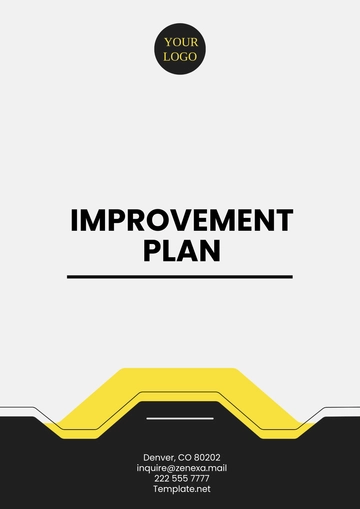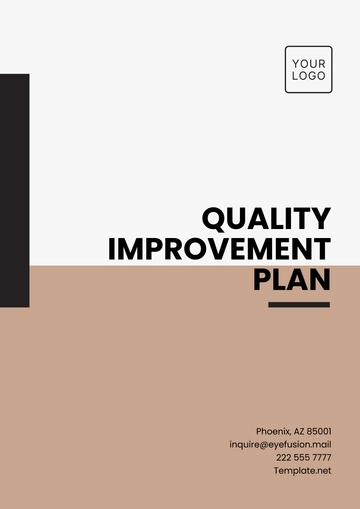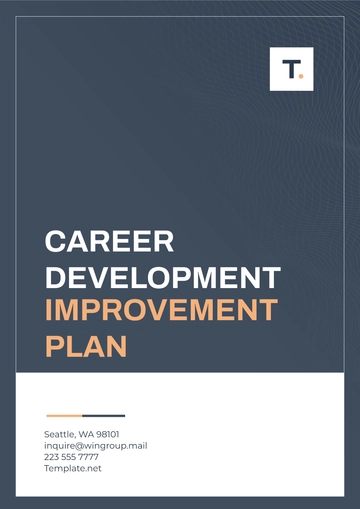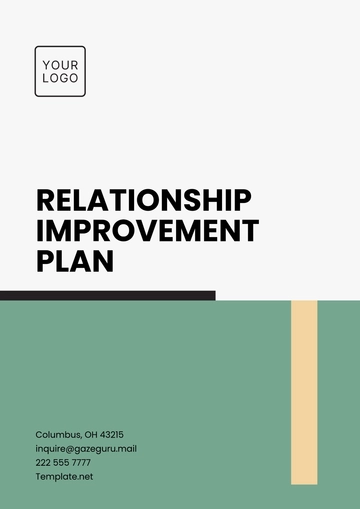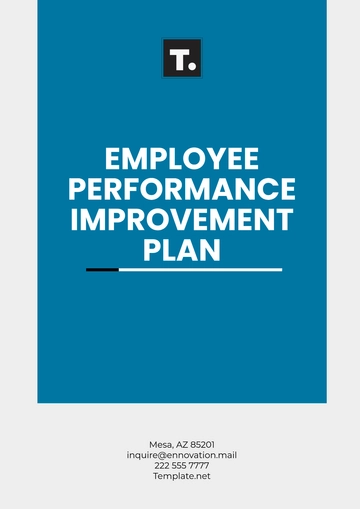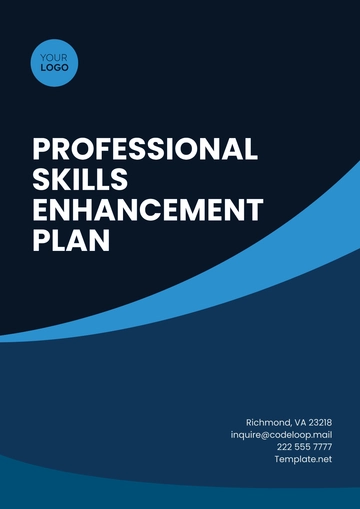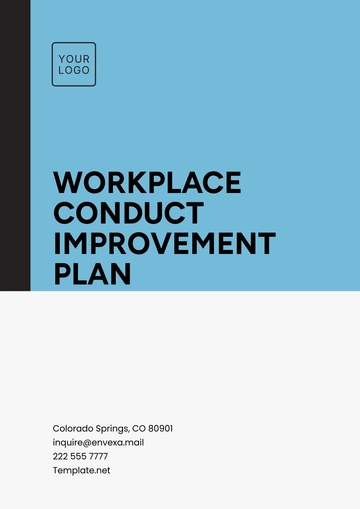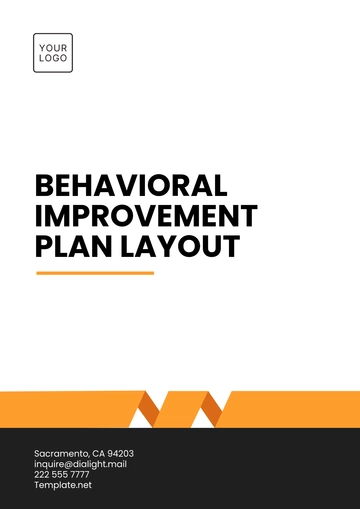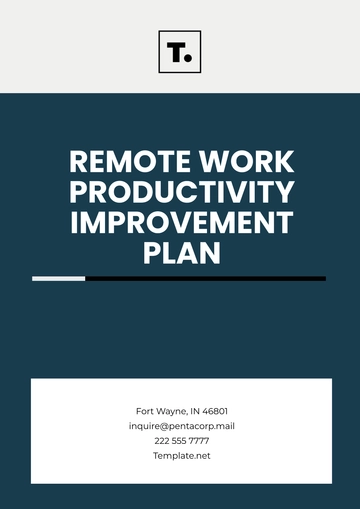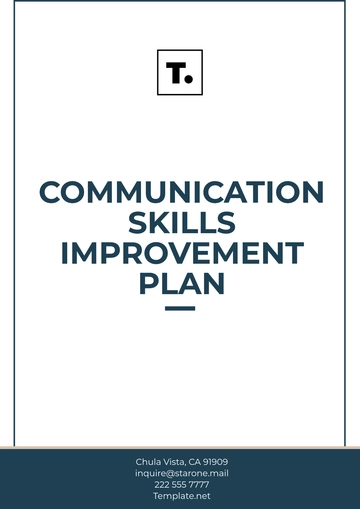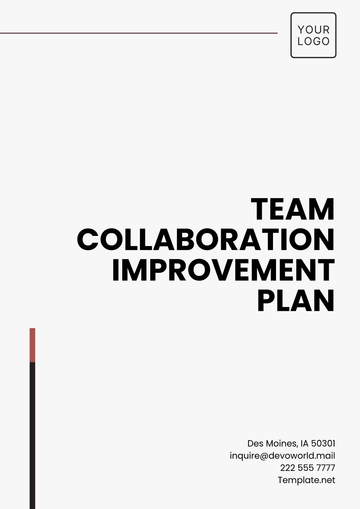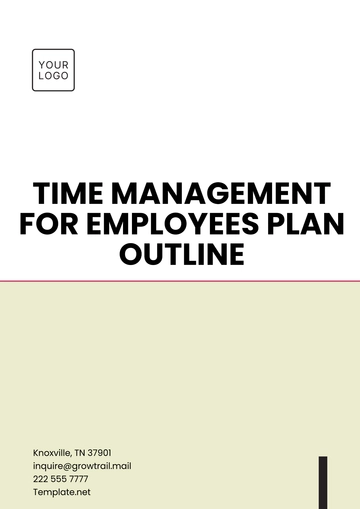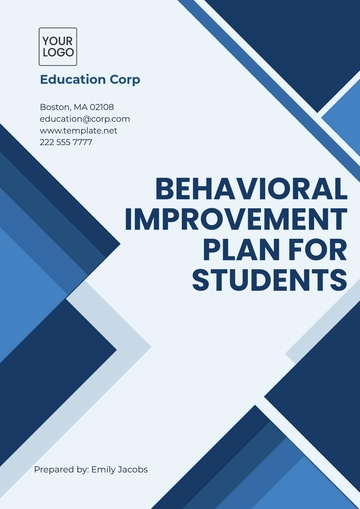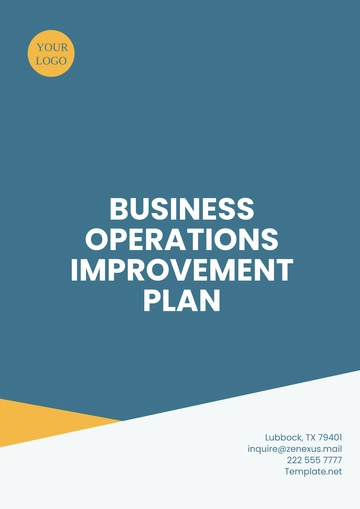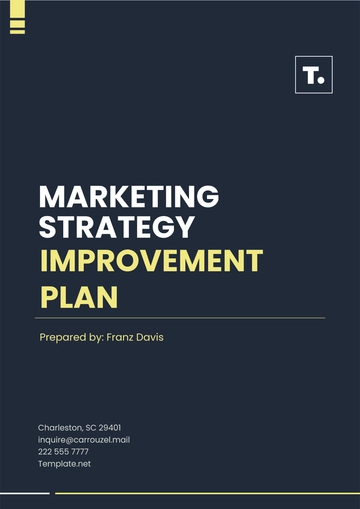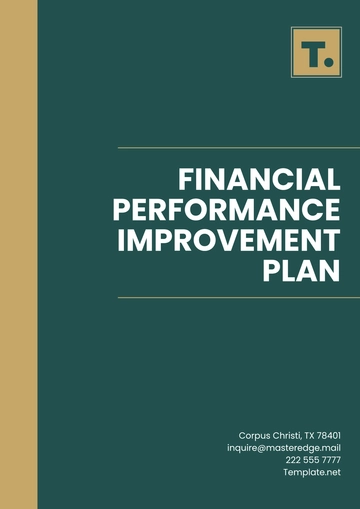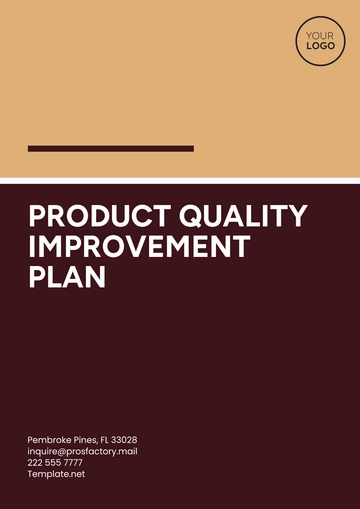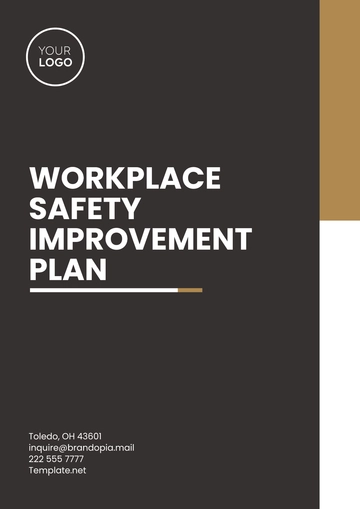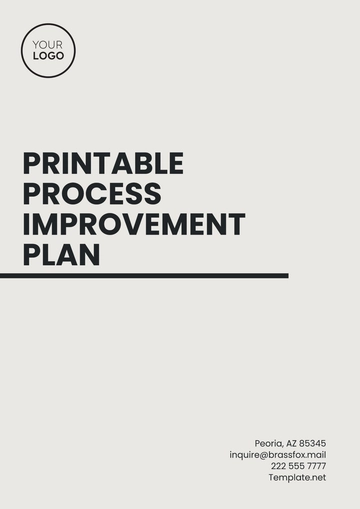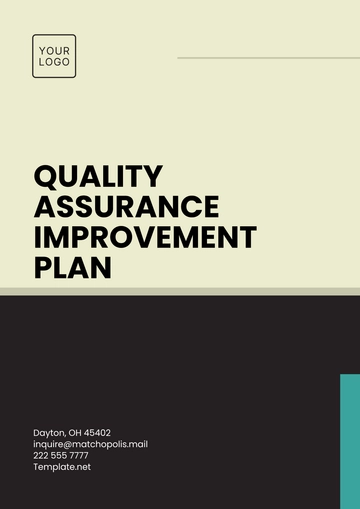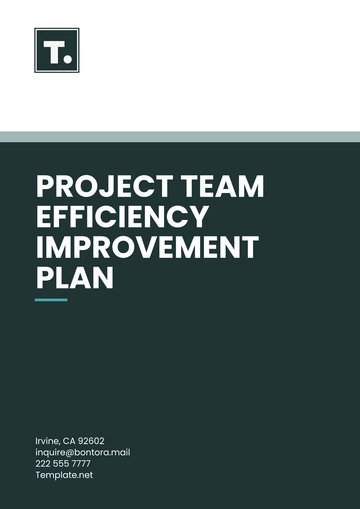Free Movie Theater Improvement Plan
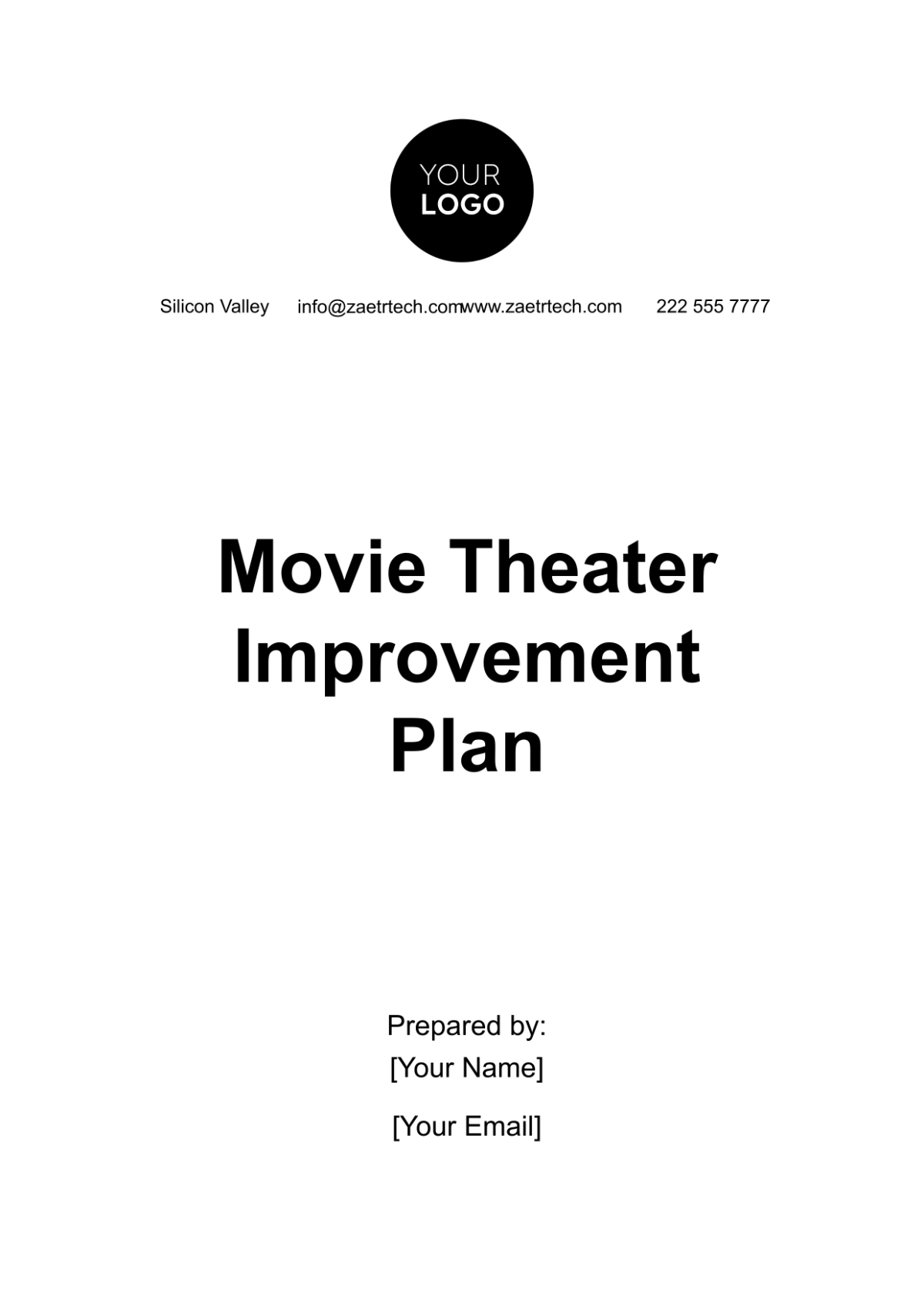
1. Introduction
In the year [2050], the entertainment landscape has undergone profound transformations due to rapid technological advancements, evolving consumer preferences, and significant global events that have reshaped how audiences engage with film. Movie theaters are no longer merely venues for watching films; they have evolved into multi-dimensional entertainment hubs that offer immersive experiences tailored to diverse audience needs. This comprehensive Movie Theater Improvement Plan outlines strategic initiatives that [Your Company Name] will implement to enhance the customer experience, optimize operations, and ensure long-term sustainability and profitability.
2. Market Analysis
2.1. Industry Trends
The movie theater industry has witnessed several transformative trends over the past few decades. Notably:
Technology Integration: The integration of advanced technologies such as virtual reality (VR), augmented reality (AR), and artificial intelligence (AI) in the viewing experience has become prevalent. For instance, immersive VR environments allow audiences to step into the movie universe, while AR can enhance storytelling by providing additional information or interactive elements during the viewing experience. The use of AI for personalized marketing and enhanced customer service is particularly noteworthy, allowing theaters to anticipate and meet customer preferences more effectively.
Diverse Content Offerings: Audiences are increasingly seeking diverse content beyond traditional films. This includes live streaming of events, esports competitions, and interactive experiences. To remain competitive, theaters must reevaluate their programming strategies to include a broader range of offerings that appeal to various audience segments. The rise of content streaming services has also compelled theaters to offer unique experiences that cannot be replicated at home.
Sustainability: Environmental consciousness among consumers has risen, prompting theaters to adopt sustainable practices. This includes energy-efficient operations, waste reduction programs, and sustainable sourcing of materials. Today's audience is more likely to patronize establishments that demonstrate a commitment to environmental responsibility, making sustainability a crucial element of any successful business strategy.
2.2. Competitive Landscape
The competitive landscape of the movie theater industry includes traditional cinema chains, independent theaters, and alternative entertainment venues. Key competitors in the market include:
Competitor Name | Strengths | Weaknesses |
|---|---|---|
Chain A | Strong brand recognition, large reach | Limited personalized service |
Chain B | Innovative technology adoption | Higher ticket prices |
Independent C | Unique programming, community focus | Smaller scale, limited resources |
Alternative D | Diverse content offerings, immersive experiences | Not traditional movie formats |
Understanding these dynamics will guide [Your Company Name] in carving out a competitive advantage. For example, while larger chains may dominate in terms of volume, independent theaters can attract niche audiences through curated film selections and community-oriented programming.
2.3. Target Audience
The target audience for [Your Company Name] consists of a diverse demographic that includes:
Families: Seeking family-friendly films and experiences, including children's programming and educational content.
Young Adults: Engaged with interactive and immersive content, often seeking unique social experiences to share with friends.
Film Enthusiasts: Interested in indie films, classic cinema, and specialized screenings that provide deeper insights into the film industry.
Corporate Clients: Looking for venues for meetings, presentations, and team-building activities, requiring facilities that can accommodate corporate needs.
Tailoring marketing strategies and experiences to these segments will enhance customer engagement and loyalty. A detailed understanding of audience demographics, preferences, and behaviors will inform all aspects of [Your Company Name]'s operations, from programming to marketing.
3. Improvement Initiatives
To address the evolving needs of consumers and the competitive landscape, [Your Company Name] proposes the following improvement initiatives.
3.1. Technology Upgrades
3.1.1. Enhanced Viewing Experience
IMAX and 4D Screens: Investing in IMAX and 4D technologies will provide an unparalleled viewing experience. IMAX screens enhance visual quality with larger-than-life images and state-of-the-art sound systems, creating a fully immersive experience. Meanwhile, 4D incorporates motion and environmental effects, allowing viewers to feel part of the movie. The estimated cost of installing IMAX and 4D technologies across [5] locations is projected at [USD 3 million].
VR and AR Experiences: Introducing VR and AR technology in select theaters will allow customers to engage in immersive storytelling experiences. For instance, offering VR escape rooms themed around popular films could attract younger audiences and enhance social interaction. These immersive experiences will not only differentiate [Your Company Name] from competitors but also drive additional revenue streams.
Technology Component | Description | Estimated Cost |
|---|---|---|
IMAX Screens | Enhanced visual and audio experience | [USD 2 million] |
4D Experience | Motion and environmental effects | [USD 1 million] |
3.1.2. AI-Driven Customer Service
Chatbots and Virtual Assistants: Implementing AI-powered chatbots on the website and mobile app will streamline ticket purchasing and provide instant answers to customer inquiries. This will enhance customer satisfaction and reduce wait times significantly. Chatbots can also be programmed to recommend films based on previous viewings, further personalizing the experience.
Personalized Marketing: Utilizing AI algorithms to analyze customer data will allow for personalized marketing strategies, offering tailored recommendations based on viewing history and preferences. For example, customers who frequently attend horror films could receive alerts about upcoming horror releases or special screenings. This targeted approach will likely increase ticket sales and concessions.
3.2. Facility Enhancements
3.2.1. Interior Redesign
Luxury Seating: Upgrading to luxury recliner seating will enhance comfort and customer experience. Research shows that patrons are willing to pay a premium for a more comfortable experience, and the pilot program will assess customer feedback on seating preferences. This initiative is estimated to cost [USD 2 million] across all locations.
Ambiance and Décor: Redesigning the interior of theaters to create a more inviting and luxurious atmosphere will enhance the overall experience. This includes mood lighting, modern decor, and themed areas based on popular films. Engaging local artists to contribute to the decor can create a unique atmosphere that resonates with the community.
Improvement Aspect | Description | Estimated Cost |
|---|---|---|
Luxury Seating | Upgrade to recliner seating | [USD 2 million] |
Interior Décor | Modernizing theater ambiance | [USD 500,000] |
3.2.2. Concessions Upgrade
Health-Conscious Options: Expanding the concessions menu to include healthier options such as salads, smoothies, and organic snacks will cater to the growing demand for healthier food choices. In addition to traditional popcorn and candy, offering a diverse range of food options can appeal to a wider audience and increase per capita spending.
Local Sourcing: Partnering with local food vendors for snacks and drinks will not only enhance the menu diversity but also promote community engagement and sustainability. Featuring locally sourced products can strengthen community ties and enhance the brand's reputation as a socially responsible entity.
3.3. Programming Diversification
3.3.1. Expanded Content Offerings
Live Streaming and Events: Hosting live-streamed events such as concerts, sports events, and theatrical performances will attract diverse audiences. This can include collaborations with local artists and organizations. For instance, a monthly film and live music night could become a popular community event, attracting new patrons and creating a vibrant atmosphere.
Film Festivals: Organizing annual film festivals featuring indie films and short films will foster community engagement and attract film enthusiasts. This initiative can also promote local filmmakers, encouraging submissions and showcasing local talent. Special panels and discussions could be held to enhance the festival experience.
3.3.2. Membership Programs
Loyalty Programs: Introducing a tiered loyalty program offering rewards based on ticket purchases, concessions, and referrals will incentivize repeat visits and enhance customer loyalty. A well-structured loyalty program can increase customer retention and average spend per visit.
Membership Tier | Benefits | Annual Fee |
|---|---|---|
Silver | [10%] off tickets, exclusive screenings | [USD 50] |
Gold | [20%] off tickets, concessions discounts | [USD 100] |
Platinum | Free tickets, priority seating | [USD 200] |
3.4. Sustainability Initiatives
3.4.1. Energy Efficiency
Renewable Energy Sources: Investing in renewable energy sources such as solar panels will reduce the theater’s carbon footprint and operational costs over time. A feasibility study will assess potential savings. By transitioning to renewable energy, [Your Company Name] can position itself as a leader in sustainability within the entertainment industry.
Energy-Efficient Systems: Upgrading HVAC and lighting systems to energy-efficient models will decrease energy consumption and improve comfort. Implementing smart technology to monitor and control energy usage can further enhance efficiency, ensuring that energy is used optimally throughout the facility.
3.4.2. Waste Reduction Programs
Recycling Initiatives: Implementing comprehensive recycling programs for plastics, paper, and food waste will contribute to sustainability goals. Staff training on waste management practices will be essential. Additionally, partnering with local recycling organizations can enhance these efforts and demonstrate community commitment.
Digital Ticketing: Encouraging digital ticket purchases will reduce paper waste associated with physical tickets. A marketing campaign will promote this option to customers, highlighting its convenience and environmental benefits. This initiative aligns with broader sustainability trends, appealing to environmentally conscious audiences.
4. Financial Projections
4.1. Budget Overview
To support the implementation of the improvement initiatives outlined in this plan, a comprehensive budget has been developed. This budget includes projected costs, potential funding sources, and expected revenue increases.
Initiative | Estimated Cost | Funding Source | Expected Revenue Increase |
|---|---|---|---|
Technology Upgrades | [USD 4 million] | Internal reserves, loans | [USD 1.5 million annually] |
Facility Enhancements | [USD 2.5 million] | Grants, sponsorships | [USD 800,000 annually] |
Programming Diversification | [USD 1 million] | Ticket sales, partnerships | [USD 500,000 annually] |
Sustainability Initiatives | [USD 1 million] | Community grants, donations | [USD 300,000 annually] |
4.2. Return on Investment (ROI)
The projected return on investment for these initiatives will be assessed over a [5-year] period. Key financial metrics include:
Break-even Point: Anticipated to be reached within [2 years] post-implementation.
Total Revenue Increase: Expected to increase by [USD 3.1 million] annually by the end of the [5-year] period.
Net Profit Margin: Projected to improve from [10%] to [15%] due to increased revenue and optimized operational efficiency.
5. Implementation Timeline
To ensure successful execution of the improvement initiatives, a detailed timeline has been established. This timeline outlines key milestones, associated tasks, and deadlines:
Phase | Milestone | Timeline |
|---|---|---|
Planning | Finalize improvement plan | Q1 2050 |
Technology Upgrades | Install new viewing technology | Q2 2050 |
Facility Enhancements | Complete interior redesign | Q3 2050 |
Programming Diversification | Launch new programming initiatives | Q4 2050 |
Sustainability Initiatives | Begin implementation of energy programs | Q1 2051 |
5.1. Task Assignments
To effectively manage the execution of this plan, specific task assignments will be outlined, detailing who is responsible for each initiative. This will include cross-departmental collaboration to ensure cohesive implementation:
Initiative | Assigned Department | Responsibilities |
|---|---|---|
Technology Upgrades | IT and Facilities Management | Oversee installation and integration |
Facility Enhancements | Operations and Design Team | Lead redesign efforts and ensure compliance |
Programming Diversification | Marketing and Programming | Curate and promote diverse programming |
Sustainability Initiatives | Environmental Affairs | Implement and monitor sustainability efforts |
6. Evaluation and Monitoring
6.1. Performance Metrics
To measure the success of the improvement initiatives, [Your Company Name] will establish key performance metrics, including:
Attendance Rates: Monitoring ticket sales and attendance patterns will gauge the impact of programming changes. Monthly tracking will identify trends and potential areas for further marketing efforts.
Customer Satisfaction: Analyzing feedback and survey results will provide insights into customer satisfaction levels. Implementing a customer feedback loop will enable continuous improvement and ensure that patrons feel heard.
Revenue Growth: Tracking revenue trends will assess the financial impact of implemented improvements. Regular financial analysis will help identify which initiatives yield the highest returns.
6.2. Continuous Improvement
Regular evaluations of the implemented initiatives will be essential to ensure continued success. This will involve:
Quarterly Reviews: Conducting quarterly reviews of performance metrics will identify trends and areas for improvement. These reviews will facilitate adjustments to strategies and ensure alignment with market changes.
Adaptation: Being flexible and willing to adapt strategies based on customer feedback and market changes will be crucial for long-term success. Establishing a cross-functional team for ongoing strategy refinement will help ensure agility.
7. Conclusion
The proposed Movie Theater Improvement Plan positions [Your Company Name] to adapt to the evolving entertainment landscape and meet the demands of modern consumers. By leveraging technology, enhancing facilities, diversifying programming, and committing to sustainability, [Your Company Name] will create a dynamic and engaging environment that attracts and retains a diverse audience. This comprehensive plan, along with a commitment to continuous improvement, will ensure the long-term viability and success of [Your Company Name] in the competitive movie theater industry of [2050] and beyond.
The strategic initiatives outlined in this plan will not only enhance the overall customer experience but will also drive revenue growth, foster community engagement, and contribute to a sustainable future. As the industry continues to evolve, [Your Company Name] remains committed to innovation and excellence, ensuring that it remains a beloved destination for moviegoers in the years to come.
By implementing these comprehensive strategies, [Your Company Name] will not only keep pace with industry trends but will also set the standard for what modern movie theaters can achieve, positioning itself as a leader in the entertainment sector.
- 100% Customizable, free editor
- Access 1 Million+ Templates, photo’s & graphics
- Download or share as a template
- Click and replace photos, graphics, text, backgrounds
- Resize, crop, AI write & more
- Access advanced editor
Enhance operations with the Movie Theater Improvement Plan Template from Template.net. This editable and customizable template helps you identify areas for growth and implement actionable strategies. Use our Ai Editor Tool to tailor it for your theater. Drive progress—create a targeted improvement plan today!
You may also like
- Finance Plan
- Construction Plan
- Sales Plan
- Development Plan
- Career Plan
- Budget Plan
- HR Plan
- Education Plan
- Transition Plan
- Work Plan
- Training Plan
- Communication Plan
- Operation Plan
- Health And Safety Plan
- Strategy Plan
- Professional Development Plan
- Advertising Plan
- Risk Management Plan
- Restaurant Plan
- School Plan
- Nursing Home Patient Care Plan
- Nursing Care Plan
- Plan Event
- Startup Plan
- Social Media Plan
- Staffing Plan
- Annual Plan
- Content Plan
- Payment Plan
- Implementation Plan
- Hotel Plan
- Workout Plan
- Accounting Plan
- Campaign Plan
- Essay Plan
- 30 60 90 Day Plan
- Research Plan
- Recruitment Plan
- 90 Day Plan
- Quarterly Plan
- Emergency Plan
- 5 Year Plan
- Gym Plan
- Personal Plan
- IT and Software Plan
- Treatment Plan
- Real Estate Plan
- Law Firm Plan
- Healthcare Plan
- Improvement Plan
- Media Plan
- 5 Year Business Plan
- Learning Plan
- Marketing Campaign Plan
- Travel Agency Plan
- Cleaning Services Plan
- Interior Design Plan
- Performance Plan
- PR Plan
- Birth Plan
- Life Plan
- SEO Plan
- Disaster Recovery Plan
- Continuity Plan
- Launch Plan
- Legal Plan
- Behavior Plan
- Performance Improvement Plan
- Salon Plan
- Security Plan
- Security Management Plan
- Employee Development Plan
- Quality Plan
- Service Improvement Plan
- Growth Plan
- Incident Response Plan
- Basketball Plan
- Emergency Action Plan
- Product Launch Plan
- Spa Plan
- Employee Training Plan
- Data Analysis Plan
- Employee Action Plan
- Territory Plan
- Audit Plan
- Classroom Plan
- Activity Plan
- Parenting Plan
- Care Plan
- Project Execution Plan
- Exercise Plan
- Internship Plan
- Software Development Plan
- Continuous Improvement Plan
- Leave Plan
- 90 Day Sales Plan
- Advertising Agency Plan
- Employee Transition Plan
- Smart Action Plan
- Workplace Safety Plan
- Behavior Change Plan
- Contingency Plan
- Continuity of Operations Plan
- Health Plan
- Quality Control Plan
- Self Plan
- Sports Development Plan
- Change Management Plan
- Ecommerce Plan
- Personal Financial Plan
- Process Improvement Plan
- 30-60-90 Day Sales Plan
- Crisis Management Plan
- Engagement Plan
- Execution Plan
- Pandemic Plan
- Quality Assurance Plan
- Service Continuity Plan
- Agile Project Plan
- Fundraising Plan
- Job Transition Plan
- Asset Maintenance Plan
- Maintenance Plan
- Software Test Plan
- Staff Training and Development Plan
- 3 Year Plan
- Brand Activation Plan
- Release Plan
- Resource Plan
- Risk Mitigation Plan
- Teacher Plan
- 30 60 90 Day Plan for New Manager
- Food Safety Plan
- Food Truck Plan
- Hiring Plan
- Quality Management Plan
- Wellness Plan
- Behavior Intervention Plan
- Bonus Plan
- Investment Plan
- Maternity Leave Plan
- Pandemic Response Plan
- Succession Planning
- Coaching Plan
- Configuration Management Plan
- Remote Work Plan
- Self Care Plan
- Teaching Plan
- 100-Day Plan
- HACCP Plan
- Student Plan
- Sustainability Plan
- 30 60 90 Day Plan for Interview
- Access Plan
- Site Specific Safety Plan
